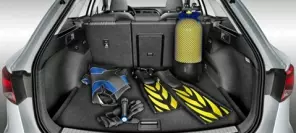- Main page
- Search
- Up to date
- Products
- Technology
- Vehicles
- Video
- Conversion Payback Simulator
Port Injection - Conversion Payback Simulator
Direct Injection - Conversion Payback Simulator
Diesel - Newsletter
CNG-powered cars - bestsellers of 2014
 loading results...
loading results... © FiatThe Panda Natural Gas reigns indivisibly. If any car could pose a threat to its position, another Fiat - the Punto - is the closest to doing it, although it's far enough
© FiatThe Panda Natural Gas reigns indivisibly. If any car could pose a threat to its position, another Fiat - the Punto - is the closest to doing it, although it's far enoughOptimists and CNG enthusiasts claim that by the year 2020 the number of cars running on CNG on European roads will have grown ten-fold – from the current 1,2 million to 10-12 million. As for carmakers, they believe this is indeed possible, but only on condition that local governments support the burgeoning market (by offering tax breaks and incentives) and the network of refueling stations develops enough to make drivers feel comfortable when traveling longer distances in their methane-powered cars.
CNG is promoted as an environment-friendly, affordable substitute for petrol and diesel fuel. According to data from September 2014, the average European price of CNG is 79 eurocents per unit, as compared to 1,49 euros for petrol and 1,39 euros for diesel. And so it is no wonder the number of drivers willing to switch to CNG is on the up, even if the rate of growth is insufficient to call natural gas the oil of tomorrow. However, this year's market newcomers move quickly up the sales list, so in all probability it's only going to get better.
The Volkswagen Group is particularly aggressive in their attempts to conquer the market. In the A segment (smallest cars), the Up!/Citigo/Mii triplets have been introduced, while the C segment (compacts) has been reinforced by as many as four models: the Volkswagen Golf TGI BlueMotion, the Audi A3 Sportback g-tron, the Seat Leon TGI and the Skoda Octavia G-TEC. New incarnations of the B- and E-class Mercedes' have also appeared, this time wearing an NGD (Natural Gas Drive) moniker. Thanks to the new models debuting for and in the 2014 season, the market has grown by 7% across the first nine months of the year as compared to the same period of 2013, with 66952 cars sold. Even so, the bestselling brand of CNG cars is still Fiat, whose buyers account for as much as a half of all buyers of methane-powered cars in Europe (33197 cars sold). Volkswagen, second in the standings, sold half as many cars as Fiat did (16755). No surprise here, actually – the Italian CNG car market is Europe's biggest (880 thousand vehicles as of June 2014), while the German market comprises 95708 cars. Sweden comes third with a result of 43796.
Italy also leads the pack when it comes to new CNG car purchases – 5% of cars cold there feature methane systems. The 1040 station-strong refueling network is definitely a factor here, making natural gas attractive not only to operators of municipal fleets and public transport companies, but also individual drivers. It's the latter who make the Fiat Panda the most popular CNG-powered model across Europe. The Panda's reign is safe, especially since the second car on the list – the Fiat Punto – lags far behind with only half as many examples sold. Scroll down to see full top ten results (for January to September 2014). Figures in parentheses are results for the same period of 2013.
- Fiat Panda – 16279 (18502);
- Fiat Punto – 8591 (11677);
- Volkswagen Up! – 7098 (7916);
- Fiat 500L – 5132 (1319);
- Volkswagen Golf – 5063 (40);
- Lancia Ypsilon – 4963 (5859);
- Audi A3 – 3314 (24);
- Fiat Fiorino/Qubo – 2491 (4127);
- Opel Zafira – 1931 (3112);
- Volkswagen Passat – 1889 (2544);
- total – 66952 (62594).
 © VolkswagenThe CNG-powered Golf appeared a year ago and is already fifth bestselling model in Europe. If Volkswagen wants to make it a top seller, it will become it
© VolkswagenThe CNG-powered Golf appeared a year ago and is already fifth bestselling model in Europe. If Volkswagen wants to make it a top seller, it will become itCompared to Italy, the refueling station network is almost equally well developed in Germany – there are 920 stations there, including 840 public and 80 internal ones. Given these figures, the number of CNG cars in Germany, standing at slightly below 100 thousand at the moment, seems like just a prelude for a true boom. And while we're at refueling infrastructure in general, it is the greatest single hindrance for widespread adoption of natural gas as motor fuel – erecting a CNG station costs three times as much as a conventional fuel station, so fuel station operators aren't exactly enthusiastic about adding the CNG option to their existing forecourts.
However, the ambitions of certain European cities attempting to limit the use of diesel fuel may prove helpful. Apparently, the golden age of oil-burners is now becoming a thing of the past and e. g. French autorities are considering changing their fiscal policy in such a way that driving diesels will just no longer make sense economically. CNG-powered refuse trucks and city buses may soon be joined on the streets by taxis, with private cars to follow suit. And even if going for natural gas today means paying more than for diesel (e. g. the Golf TGI costs 25400 euros in Germany, while the TDI version stands at 23745 euros), not to mention petrol (the Mercedes B 200 NGD is priced at 4000 euros more than its closest petrol counterpart), it may change over time and probably will. Besides, using CNG lowers your actual fuel bills.
Still, carmakers shouldn't wait and introduce new models as quickly as possible – technological progress knows no end and sooner or later electric cars capable of covering 800 km on a single charge and recharged within 5 minutes will become reality. If CNG is supposed to conquer the world of motor fuels, it had better hurry. Of course, we'll keep our fingers crossed.
You may also find these interesting:
 loading results...
loading results...








